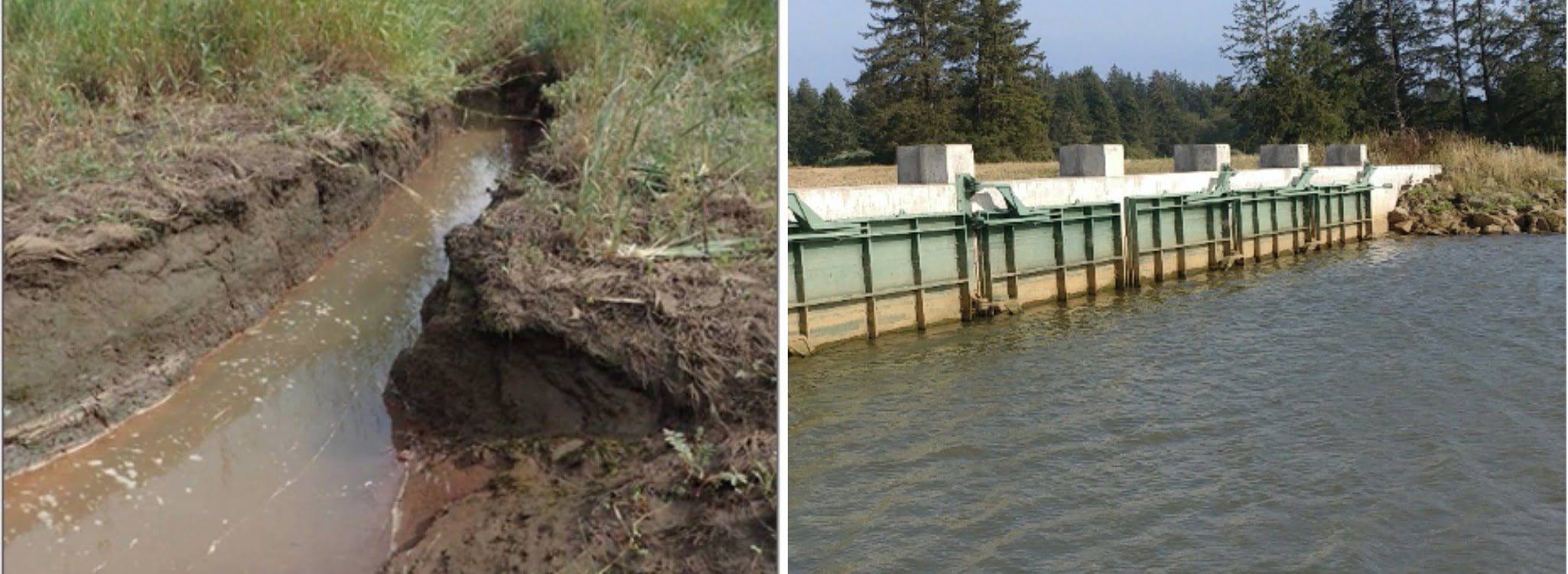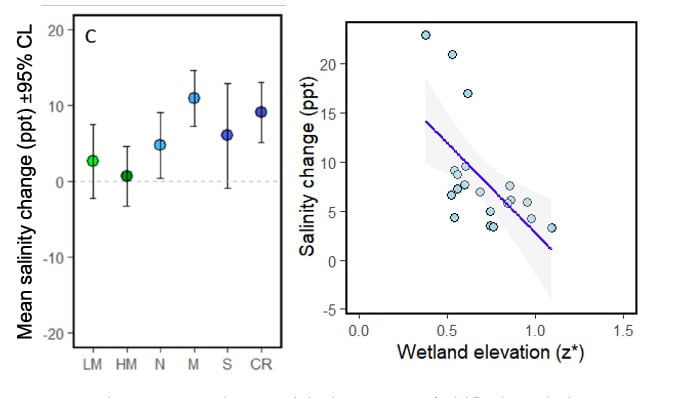
Estuary Technical Group reports on tidal wetland restoration in Tillamook
By Laura Brophy
December 2020
The Southern Flow Corridor project in Tillamook County is one of Oregon’s largest tidal wetland restoration projects, with 443 acres of tidal marsh and swamp restored in 2016. Since 2013, the Estuary Technical Group has teamed with Oregon State University, the Confederated Tribes of Siletz Indians, the University of Oregon, and the Tillamook Estuaries Partnership to monitor pre-restoration conditions and post-restoration recovery of ecosystems at this amazing site. The team is currently finishing its final report, and we've highlighted some results below. Look for the full report on the ETG reports page soon!


Tidal wetlands provide important habitat for young salmon, providing them with rich food sources and a sheltered environment for rapid growth before they enter the ocean. Fish monitoring showed that after restoration, twice as many juvenile chinook used the Southern Flow Corridor compared to pre-restoration, and juvenile chum salmon were six times more abundant than before restoration. Coho salmon used the site both before and after restoration.
This project was funded by the National Oceanic and Atmospheric Administration (NOAA), U.S. Fish and Wildlife Service (USFWS), and the Oregon Watershed Enhancement Board (OWEB). Many partners collaborated with related research projects as well as in-kind contributions of labor and materials. We are grateful for the opportunity to study the results of restoration at Southern Flow Corridor.
Restoration
Research
Education
Get Involved
Contact
Main Office:
4950 SW Hout Street
Corvallis, OR 97333-9598
541-753-3099
[email protected]
Southwest Office:
1202 Parkway Dr. Suite B
Santa Fe, NM 87507
(505) 490-4910
[email protected]
© 2024 Institute for Applied Ecology | Privacy Policy






